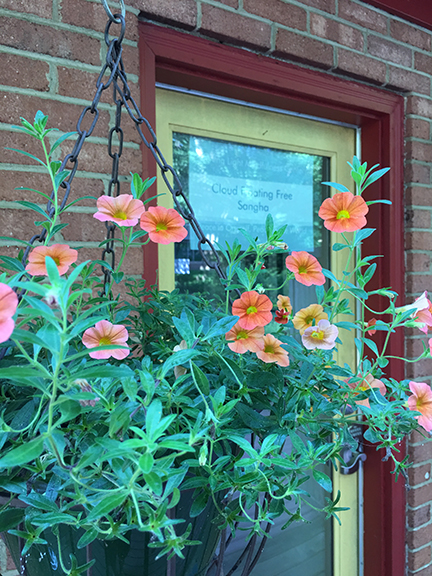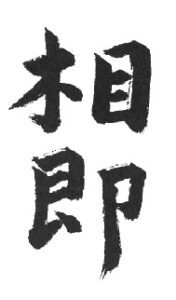by Pam Marraccini | awareness, breathing, compassion, deep listening, heart, interbeing, listening, love, meditation, present, seed, store consciousness, suffering, understanding
 Ask with your whole body and mind… Ask the person who causes you the most suffering these questions: “Who are you who brings me such pain, who makes me feel so much anger and hatred?” To understand you have to become one with your beloved, and also with your so-called enemy. You have to worry about what they worry about, suffer their suffering, appreciate what they appreciate. You and your object of love cannot be two. They are as much you as you are yourself.
Ask with your whole body and mind… Ask the person who causes you the most suffering these questions: “Who are you who brings me such pain, who makes me feel so much anger and hatred?” To understand you have to become one with your beloved, and also with your so-called enemy. You have to worry about what they worry about, suffer their suffering, appreciate what they appreciate. You and your object of love cannot be two. They are as much you as you are yourself.
Continue until you see yourself in the cruelest person on Earth, in the child starving, in the political prisoner. Practice until you recognize yourself in everyone in the supermarket, on the street corner, in a concentration camp, on a leaf, in a dewdrop. Meditate until you see yourself in a speck of dust in a distant galaxy. See and listen with the whole of your being. If you are fully present, the rain of the Dharma will water the deepest seeds in your store consciousness, and tomorrow, while you are washing the dishes or looking at the blue sky, that seed will spring forth, and love and understanding will appear as a beautiful flower.
by Pam Marraccini | afflictions, anger, breathing, Buddhist psychology, compassion, concentration, energy, inner child, meditation, mental formation, mind consciousness, mindfulness, nonduality, seed, store consciousness, Thich Nhat Hanh, walking meditation
by Thich Nhat Hanh
CHAPTER ONE
The Energy of Mindfulness
The energy of mindfulness is the salve that will recognize and heal the child within. But how do we cultivate this energy?
Buddhist psychology divides consciousness into two parts. One part is mind consciousness and the other is store consciousness. Mind consciousness is our active awareness. Western psychology calls it “the conscious mind.” To cultivate the energy of mindfulness, we try to engage our active awareness in all our activities and be truly present with whatever we are doing. We want to be mindful as we drink our tea or drive through the city. When we walk, we want to be aware that we are walking. When we breathe, we want to be aware that we are breathing.
Store consciousness, also called root consciousness, is the base of our consciousness. In Western psychology it’s called “the unconscious mind.” It’s where all our past experiences are stored. Store consciousness has the capacity to learn and to process information.
Often our mind is not there with our body. Sometimes we go through daily activities without mind consciousness being involved at all. We can do many things by means of store consciousness alone, and mind consciousness can be thinking of a thousand other things. For example, when we drive our car through the city, mind consciousness may not be thinking about driving at all, but we still reach our destination without getting lost or having an accident. That is our store consciousness operating on its own.
Consciousness is like a house in which the basement is our store consciousness and the living room is our mind consciousness. Mental formations like anger, sorrow, or joy rest in the store consciousness in the form of seeds (bija). We have a seed of anger, despair, discrimination, fear, a seed of mindfulness, compassion, a seed of understanding, and so on. Store consciousness is made of the totality of the seeds, and it is also the soil that preserves and maintains all the seeds. The seeds stay there until we hear, see, read, or think of something that touches a seed and makes us feel the anger, joy, or sorrow. This is a seed coming up and manifesting on the level of mind consciousness, in our living room. Now we no longer call it a seed, but a mental formation.
When someone touches the seed of anger by saying something or doing something that upsets us, that seed of anger will come up and manifest in mind consciousness as the mental formation (cittasamskara) of anger. The word “formation” is a Buddhist term for something that’s created by many conditions coming together. A marker pen is a formation; my hand, a flower, a table, a house, are all formations. A house is a physical formation. My hand is a physiological formation. My anger is a mental formation. In Buddhist psychology we speak about fifty-one varieties of seeds that can manifest as fifty-one mental formations. Anger is just one of them. In store consciousness, anger is called a seed. In mind consciousness, it’s called a mental formation.
Whenever a seed, say the seed of anger, comes up into our living room and manifests as a mental formation, the first thing we can do is to touch the seed of mindfulness and invite it to come up too. Now we have two mental formations in the living room. This is mindfulness of anger. Mindfulness is always mindfulness of something. When we breathe mindfully, that is mindfulness of breathing. When we walk mindfully, that is mindfulness of walking. When we eat mindfully, that is mindfulness of eating. So in this case, mindfulness is mindfulness of anger. Mindfulness recognizes and embraces anger.
Our practice is based on the insight of nonduality – anger is not an enemy. Both mindfulness and anger are ourselves. Mindfulness is not there to suppress or fight against anger, but to recognize and take care. It’s like a big brother helping a younger brother. So the energy of anger is recognized and embraced tenderly by the energy of mindfulness.
Every time we need the energy of mindfulness, we just touch that seed with our mindful breathing, our mindful walking, smiling, and then we have the energy ready to do the work of recognizing, embracing, and later on looking deeply and transforming. Whatever we’re doing, whether its cooking, sweeping, washing, walking, being aware of breathing, we can continue to generate the energy of mindfulness, and the seed of mindfulness in us will become strong. Within the seed of mindfulness is the seed of concentration. With these two energies, we can liberate ourselves from afflictions.
 Ask with your whole body and mind… Ask the person who causes you the most suffering these questions: “Who are you who brings me such pain, who makes me feel so much anger and hatred?” To understand you have to become one with your beloved, and also with your so-called enemy. You have to worry about what they worry about, suffer their suffering, appreciate what they appreciate. You and your object of love cannot be two. They are as much you as you are yourself.
Ask with your whole body and mind… Ask the person who causes you the most suffering these questions: “Who are you who brings me such pain, who makes me feel so much anger and hatred?” To understand you have to become one with your beloved, and also with your so-called enemy. You have to worry about what they worry about, suffer their suffering, appreciate what they appreciate. You and your object of love cannot be two. They are as much you as you are yourself.
